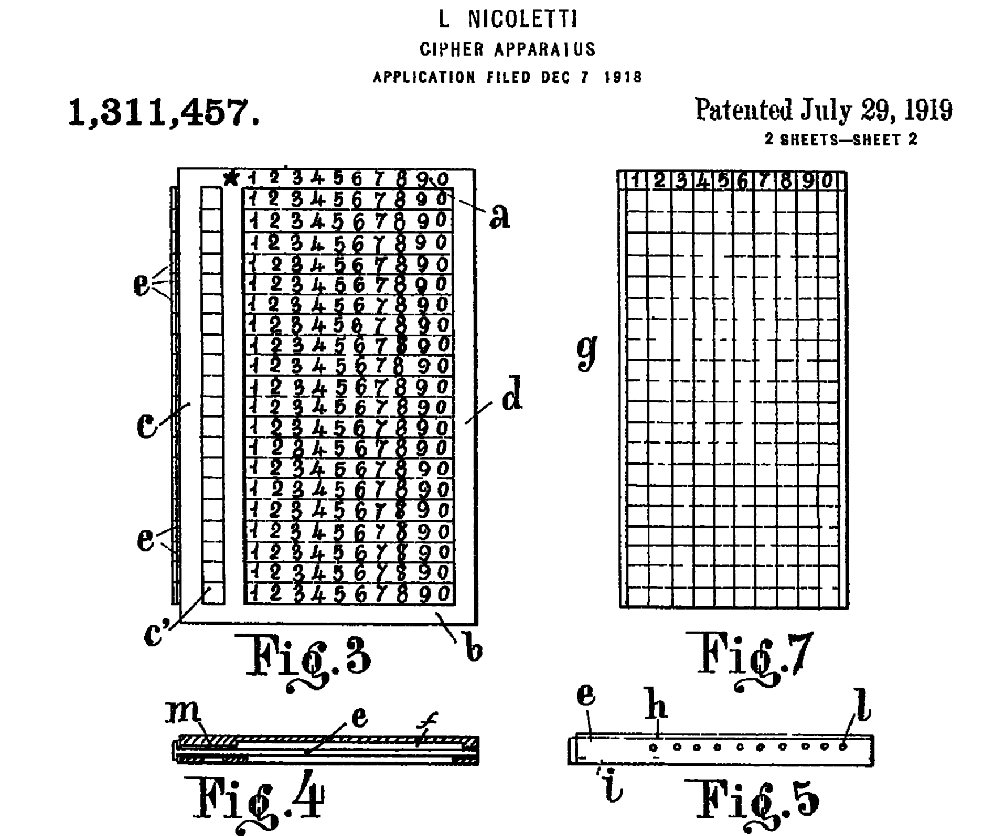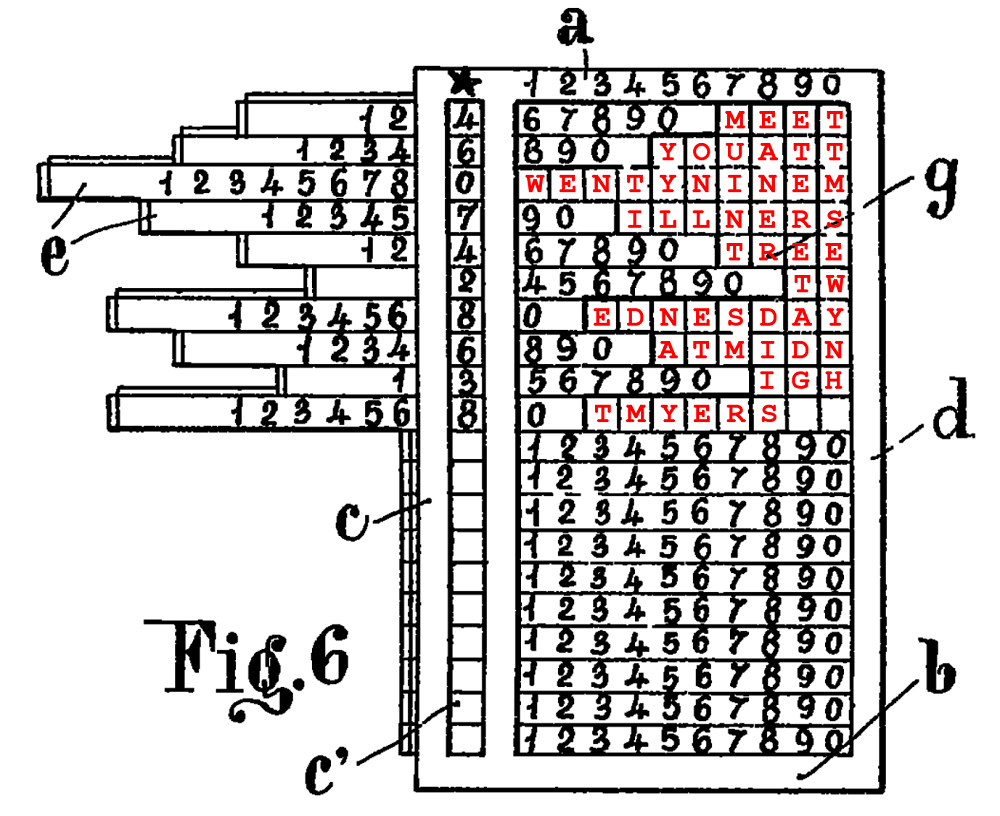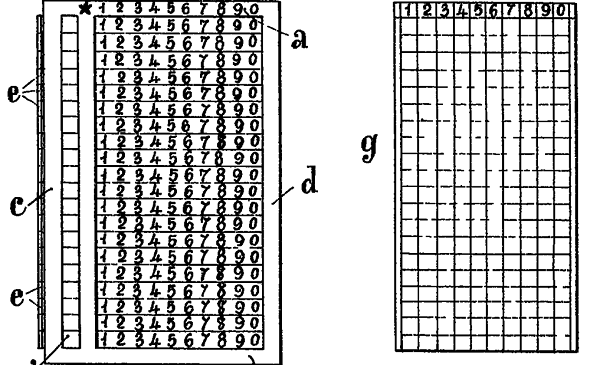After the First World War, Italian engineer Luigi Nicoletti invented a transposition cipher tool. Can you break a ciphertext I created with this device?
Most cipher machines and tools implement a substitution cipher. This means that they replace letters with others. The Enigma, the Sigaba, the Kryha and virtually all cipher disks/slides/cylinders are of this kind – just to name a few.
Nicoletti’s cipher tool
Among the very few devices that realize a transposition cipher (i.e., letters are not replaced, but their order is changed) is a cipher tool invitend by an Italian engineer named Luigi Nicoletti in 1919. The only description of it I know is the patent Nicoletti was granted.

To explain this system, we take the following plaintext:
MEET YOU AT TWENTYNINE MILLNER STREET WEDNESDAY AT MIDNIGHT MYERS
And we take a twenty-digit number as key:
46074 28638 93271 22909
For our plaintext we only use the first ten digits of the key (46074 28638), while the rest is not needed (for a longer text, we would need more). The following picture shows how the device is configured based on the key and how the plaintext is written into it:

From this picture it should become clear why we only need the first ten digits of the key (and only the first ten lines of the device). A longer message requires more lines and therefore more key digits.
In the second encryption step, the text is read out column-wise. The result is the ciphertext:
WENETTIDMY YLNAYONLET EMUINTSMRE ANERDIISET ERETADGTTM SEWYNH
A challenge
The following ciphertext is encrypted in the same way, but with a different key:
TOGURRDTEN OIEOHFETNC MRNNCIMOSI TEIIDBASER SLHESVTOTI SJMWDEDSEA AIDSSAIAAN TORKWTSAAA MTHIWPOUAE OTLN
Can you break this cryptogram?
Follow @KlausSchmeh
Further reading: Can you solve this Cold War encryption challenge?
Linkedin: https://www.linkedin.com/groups/13501820
Facebook: https://www.facebook.com/groups/763282653806483/



Kommentare (20)